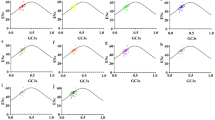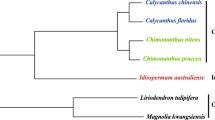Abstract
An experimental assessment was carried out to determine directly the frequency and types of spontaneous base substitutions that occur in chloroplast DNA. A target site within the chloroplast 16S rRNA gene of the green alga Chlamydomonas reinhardtii was chosen for the assay. Mutations at this site were known to confer spectinomycin resistance and simultaneously result in the loss of an AatII cleavage site. In the experiments reported here, base substitutions at any individual base occurred at a frequency in the range of 0.9–11 per 109 viable cells plated. Four new mutations that confer resistance to spectinomycin were identified at the target site in the Chlamydomonas chloroplast 16S rRNA gene. When the relative rates of transition and transversion mutations were quantified, a bias toward transversions was observed. The prominence of A/T → C/G transversions in the observed mutation spectrum suggests that oxidative damage may be the major cause of base substitution mutations within the chloroplast.


Similar content being viewed by others
References
Bailey JC II, Heinhorst S, Cannon GC (1995) Accuracy of deoxynucleotide incorporation by soybean chloroplast DNA polymerases is independent of the presence of a 3′ to 5′ exonuclease. Plant Physiol 107:1277–1284
Baross-Francis A, Makhani N, Liskay RM, Jirik FR (2001) Elevated mutant frequencies and increased C:G→T:A transitions in Mlh1−/− versus Pms2−/− murine small intestinal epithelial cells. Oncogene 20:619–625
Birky CW (1994) Relaxed and stringent genomes: why cytoplasmic genes do not obey Mendel’s laws. J Hered 85:355–365
Birky CW (2001) The inheritance of genes in mitochondria and chloroplasts: laws, mechanisms, and models. Annu Rev Genet 35:125–148
Birky CW, Walsh JB (1992) Biased gene conversion, copy number and apparent mutation rate differences within chloroplast and bacterial genomes. Genetics 130:677–683
Boiteux S, Gellon L, Guibort N (2002) Repair of 8-oxoguanine in Saccharomyces cerevisiae: interplay of DNA repair and replication mechanisms. Free Radic Biol Med 32:1244–1253
Bolen PL, Gillham NW, Boynton JE (1980) Evidence for persistence of chloroplast markers in the heteroplasmic state in Chlamydomonas reinhardtii. Curr Genet 2:159–167
Clegg MT, Gaut BS, Learn GH, Morton BR (1994) Rates and patterns of chloroplast DNA evolution. Proc Natl Acad Sci USA 91:6795–6801
Dany AL, Tissier A (2001) A functional OGG1 homologue from Arabidopsis thaliana. Mol Genet Genomics 265:293–301
DeStasio EA, Moazed D, Noller HF, Dahlberg AE (1989) Mutations in 16S ribosomal RNA disrupt antibiotic-RNA interactions. EMBO J 4:1213–1216
Fowler RG, White SJ, Koyama C, Moore SC, Dunn RL, Schaaper RM (2003) Interactions among the Escherichia coli mutT, mutM, and mutY damage prevention pathways. DNA Repair 2:159–173
Fromm H, Edelman M, Aviv D, Galun E (1987) The molecular basis for rRNA-dependent spectinomycin resistance in Nicotiana chloroplasts. EMBO J 6:3233–3237
Gaikwad A, Hop DV, Mukherjee SK (2002) A 70-kDa chloroplast DNA polymerase from pea (Pisum sativum) that shows high processivity and displays moderate fidelity. Mol Genet Genomics 267:45–56
Gielly L, Taberlet P (1994) The use of chloroplast DNA to resolve plant phylogenies: noncoding versus rbcL sequences. Mol Biol Evol 11:769–777
Gorman DA, Levine RP (1965) Cytochrome f and plastocyanin: their sequence in the photosynthetic electron transport chain of Chlamydomonas reinhardtii. Proc Natl Acad Sci USA 54:1665–1669
Harfe BD, Jinks-Robertson S (2000) DNA mismatch repair and genetic instability. Annu Rev Genet 34:359–399
Harris EH (1989) The Chlamydomonas sourcebook. A comprehensive guide to biology and laboratory use. Academic Press, San Diego
Harris EH, Burkhart BD, Gillham NW, Boynton JE (1989) Antibiotic resistance mutations in the chloroplast 16S and 23S rRNA genes of Chlamydomonas reinhardtii: correlation of genetic and physical maps of the chloroplast genome. Genetics 123:281–292
Harris EH, Boynton JE, Gillham NW (1994) Chloroplast ribosomes and protein synthesis. Microbiol Rev 58:700–754
Kornberg A, Baker T (1992) DNA replication. WH Freeman, San Francisco
Kunz BA, Ramachandran K, Vonarx EJ (1998) DNA sequence analysis of spontaneous mutagenesis in Saccharomyces cerevisiae. Genetics 148:1491–1505
Maki H (2002) Origins of spontaneous mutations: specificity and directionality of base-substitution, frameshift and sequence-substitution mutageneses. Annu Rev Genet 36:279–303
Mark LG, Sigmund CD, Morgan EA (1983) Spectinomycin resistance due to a mutation in an rRNA operon of Escherichia coli. J Bacteriol 155:989–994
Morton BR (1995) Neighboring base composition and transversion/transition bias in a comparison of rice and maize chloroplast noncoding regions. Proc Natl Acad Sci USA 92:9717–9721
Morton BR (1997) The influence of neighboring base composition on substitutions in plant chloroplast coding sequences. Mol Biol Evol 14:189–194
Morton BR, Clegg MT (1995) Neighboring base composition is strongly correlated with base substitution bias in a region of the chloroplast genome. J Mol Evol 41:597–603
Morton BR, Oberholzer VM, Clegg MT (1997) The influence of specific neighboring bases on substitution bias in noncoding regions of the plant chloroplast genome. J Mol Evol 45:227–231
Muse SV (2000) Examining rates and patterns of nucleotide substitution in plants. Plant Mol Biol 42:25–43
Palmer JD (1985) Evolution of chloroplast and mitochondrial DNA in plants and algae. In: MacIntyre RJ (ed) Molecular evolutionary genetics. Plenum Press, New York, pp 131–240
Rochaix JD, Mayfield S, Goldschmidt-Clermont M, Erickson J (1988) Molecular biology of Chlamydomonas. In: Shaw CH (ed) Plant molecular biology: a practical approach. IRL Press, Oxford, pp 253–275
Schaaper RM, Dunn RL (1987) Spectra of spontaneous mutations in Escherichia coli strains defective in mismatch correction: the nature of in vivo DNA replication errors. Proc Natl Acad Sci USA 84:6220–6224
Schaaper RM, Dunn RL (1991) Spontaneous mutation in the Escherichia coli lacI gene. Genetics 129:317–326
Shin CY, Ponomareva ON, Connolly L, Turker MS (2002) A mouse kidney cell line with a G:C→C:G transversion mutator phenotype. Mutat Res 503:69–76
Svab Z, Maliga P (1991) Mutation proximal to the tRNA binding region of the Nicotiana plastid 16S rRNA confers resistance to spectinomycin. Mol Gen Genet 228:316–319
Tran HT, Degtyareva NP, Gordenin DA, Resnick MA (1999) Genetic factors affecting the impact of DNA polymerase delta proofreading activity on mutation avoidance in yeast. Genetics 152:47–59
Wolfe KH, Li WH, Sharp PM (1987) Rates of nucleotide substitution vary greatly among plant mitochondrial, chloroplast and nuclear DNA. Proc Natl Acad Sci USA 84:9054–9058
Wolfe KH, Morden CW, Palmer JD (1992) Function and evolution of a minimal plastid genome from a non-photosynthetic parasitic plant. Proc Natl Acad Sci USA 89:10648–10652
Yang Y, Karthikeyan R, Mack SE, Vonarx EJ, Kunz BA (1999) Analysis of yeast pms1, msh2, and mlh1 mutators points to differences in mismatch correction efficiencies between prokaryotic and eukaryotic cells. Mol Gen Genet 261:777–787
Zurawski G, Clegg MT (1987) Evolution of higher plant chloroplast DNA encoded genes: implications for structure-function and phylogenetic studies. Annu Rev Plant Physiol 38:391–418
Acknowledgements
We thank Herberto Cerutti for his suggestion regarding the Aat II assay, and Michele Fluck and Ken Keegstra for helpful discussions. This work was supported by grant MCB 9982600 from the National Science Foundation to B.B.S., and was carried out in compliance with current laws governing genetic experimentation in the USA.
Author information
Authors and Affiliations
Corresponding author
Additional information
Communicated by R. Herrmann
Rights and permissions
About this article
Cite this article
GuhaMajumdar, M., Sears, B.B. Chloroplast DNA base substitutions: an experimental assessment. Mol Genet Genomics 273, 177–183 (2005). https://doi.org/10.1007/s00438-005-1121-1
Received:
Accepted:
Published:
Issue Date:
DOI: https://doi.org/10.1007/s00438-005-1121-1




